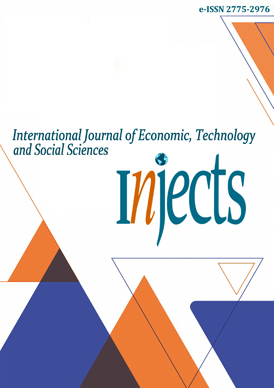Preventing Cyberbullying In Private Spaces: The Role Of Communication Ethics In Maintaining Courtesy, Self-Control, And Harmony Of Interactions In Whatsapp Groups: Approaches To Privacy, Trust, Tolerance, Digital Compliance, And Social Impact
Abstract
This study aims to analyze the role of communication ethics in preventing cyberbullying in digital private spaces, especially WhatsApp groups. The approaches used include privacy, trust, tolerance, digital compliance, and social impacts on interaction harmony. The phenomenon of cyberbullying, which often occurs in the form of teasing, sarcasm, and the spread of personal information, can trigger serious psychological impacts such as anxiety, stress, and social isolation. This research method is qualitative descriptive with limited experiments. Data were obtained through surveys, observations, and in-depth interviews with 109 respondents at the Medan Aviation Polytechnic, 62 of whom were on campus, and 47 of whom were undergoing on-the-job training. Interventions in the form of digital literacy education, strengthening privacy policies, tolerance campaigns, and active moderation were carried out to reduce the potential for conflict and improve communication ethics. The results showed a decrease in cyberbullying by 20%, a decrease in emotional conflict by 40%, and an increase in awareness of communication ethics by 35%. In addition, trust between members increased significantly, creating a safer, more conducive, and more harmonious communication space.Downloads
Published
2024-05-31
How to Cite
Muhammad Caesar Akbar, & Ofelisia Kesita. (2024). Preventing Cyberbullying In Private Spaces: The Role Of Communication Ethics In Maintaining Courtesy, Self-Control, And Harmony Of Interactions In Whatsapp Groups: Approaches To Privacy, Trust, Tolerance, Digital Compliance, And Social Impact. International Journal of Economic, Technology and Social Sciences (Injects), 5(1), 45–51. Retrieved from https://www.jurnal.ceredindonesia.or.id/index.php/injects/article/view/1229
Issue
Section
Articles
License

This work is licensed under a Creative Commons Attribution-ShareAlike 4.0 International License.




